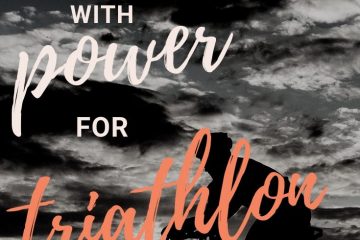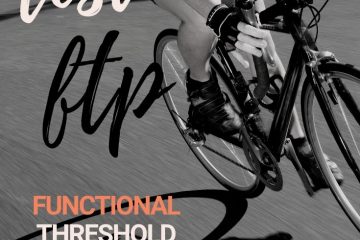most make this mistake setting goals for 2019.

…are you?
Are you having trouble setting and meeting the right goals for 2019?? Here is the major mistake you’re probably making and how I learned to fix it.
do you have outta control goals for 2019?
“Prepare for everything you can control,” they said. “Focus only on your preparation.” This is advice that’s easy to say but hard to follow. Especially when it comes to making goals for 2019.
Most of us are guilty of an extreme one way or the other. Either we’re overly optimistic, making high bar goals for 2019 which partly depend on things we can’t control, or we wing it, leaving too much to chance and failing to fully prepare. Because if you don’t have a goal then you can’t be disappointed. Am I right?
Here’s how I first learned to set better goals for 2019 and beyond:
For my first long race, the Gulf Coast Triathlon, I went way too hard on the high goal side. I thought I was going to kill it, when the truth was I went a little light on the preparation. First off, I had no idea what I was in for. I had done pretty well at my first sprint the previous month, the John Tanner Sprint. I completed two rides over 40 miles after that, so I figured I was set.
In transition on race morning, I realized how much better I could have prepared. The other athletes looked so “professional”—tan, shaved, lean—just like my vision of a triathlete. They looked purposeful in transition, too. Meanwhile, I stood around staring at everyone like some sort of stalker. Maybe I’d pick up a trick or two that would make all the difference?
Next up was wrestling on my wetsuit, a closeout special I’d found at a tri expo for only $50 (yet another unresearched buying decision). I was pretty proud of my purchase. It was such a good deal! But…it was sized for someone six inches shorter and twenty-five pounds lighter. So wrestling that thing on took some doing, and practically a whole can of PAM. Twenty minutes later, I squeezed into it. I smelled like a buttered turkey, and I couldn’t stand up straight because of my tightly bound shoulders.
While waiting to start, I checked out the ocean situation. It looked like a scene out of The Perfect Storm. I could tell both John and my mother-in-law were concerned for my safety. My wonderful mother-in-law even shed a few tears! And she wasn’t the only one. There was a girl on my team, an experienced IRONMAN finisher, crying with fear from the choppy conditions, and I was the one comforting her! What in the world had I gotten myself into? It was only good old-fashioned pride that kept me from bailing.
When the gun went off I wished I had spent more time in open water or tried a practice swim in the ocean. Surely there was a knack for getting past the breakers that pounded me backwards over and over? I was elated when I came out of the swim alive.
On the bike I finally realized what I had been blocking out, the horrible pain I experienced all over after a few hours. It was the combination of an ill-fitting bike, a bad saddle, and a self-administered bike fit. It turns out there was a reason I never made it past forty miles in training. I made it through—barely— and was excited to hit the run, where I was sure I would crush it. Alas, the lack of bike training also affected my run. Who knew!
Needless to say, when I did finish the race, I had a greater respect for the distance and many ideas for improvement. Looking back at my naiveté, there were a lot of things out of my control. It would have been hard to mimic the coastal wind conditions. Certainly, it would have been impractical to hit the beach every weekend for ocean swim practice. But the place I had failed was controlling the variables that I could control. Namely, my own preparation.
The ultimate lesson I learned was this:
Set benchmarks for preparation, focusing on controlling only what you can control.
That sounds like an easy task, yet it can get confusing, as many goals are a mixture of things you can and others you can’t.
Actionable tips for good goal settting
For this section, I enlisted the help of a goal-setting expert, certified mental performance consultant, Abby Keenan. Abby’s helped first-time athletes to Olympic Trials qualifiers set and achieve appropriate goals.
Our hypothetical goal-setting example will be for an athlete preparing for a race, however this process can be used effectively for any type of goal.
Get started
Starting where you are includes assessing where you are and comparing where you want to be in the future. Abby suggests strengthening your commitment to your goal by you’ve selecting one that’s feasible to achieve. For example, if you swam in high school and participate in all three sprots regularly, it’s well within your reach to finish a sprint triathlon in a few months. Conversely, if you don’t run at all, maybe the goal for those first twelve weeks is to progress to running thirty minutes straight. Or if you have a fear of deep water, perhaps your twelve-week goal would be to swim a certain distance, proficiently and confidently, in the pool.
When you’re excited about a goal, it’s natural to want to conquer it immediately. Trust me, I might be the most impatient person on the planet. Yet, in triathlon, as in most things, there’s no rush. Triathlon will always be there, so don’t let yourself be hurried by an ill-advised preparation timeline.
By this point, you probably have some ideas on goals and the timeline involved. If so, think about what could potentially stand in the way of your goals. Time? Money? A frequently changing work schedule? Keep these things in mind as you’re building your timeline and choosing focus areas.
Determine Focus Area
Your focus area could be many different aspects of a run or tri event. For example, maybe you’ve run in the past but haven’t run regularly in years. Your focus area could be building your run durability and increasing your resilience to injury by increasing your mileage and frequency slowly. Or if you’re a fearful swimmer, your focus should be increasing confidence and proficiency swimming indoors before venturing to the lake. Don’t make the mistake of trying to focus on everything. Pick the areas where you need the most work..
Example One: When I signed up for my first 70.3, a race approximately six months out, I could only swim a continuous fifty yards without stopping to rest. Therefore, I had a lot of steps between that and being 1.2-mile ocean swim ready. Since you have to finish the swim to complete the race, this was a needed area of focus.
Example Two: Lindsay signed up for a sprint tri in six months, but she didn’t know how to swim at all, and she has a fear of deep water. Therefore, she must factor swimming confidently and safely into her timeline as well as being race ready.
Backwards Plan and Checkpoints
Having a huge goal that’s extremely far away can be tough without milestones along the way. For example, the popularity of some races, like many IRONMAN races, necessitate signing up a whole year ahead of time! Yet I cringe when I see someone start their countdown to a race a whole year out. “Only 360 days to go, I better get to the pool[BR1] !” Instead of having one giant goal too far away to motivate, set up intermediate goals along the way.
Next, start at the deadline and work backwards to see what you need to achieve, noting shorter term checkpoints to keep you on track. If your big goal is to do an Olympic-distance triathlon, for example, you’ll want to complete a sprint triathlon first. And to complete a sprint triathlon, you’ll have to make sure you allow yourself time to train, find an event, and purchase the necessary equipment.
Example One: I signed up for a May 70.3 (Gulf Coast) in December of 2008, giving me six months to train. To stay on track, I signed up for a sprint-distance triathlon in late April. Prior to the sprint, I planned to get in four open water swims. And prior to my first open water swim, I expected to work up to one mile in the pool. Prior to my 70.3, I wanted to complete the full 70.3 distance in the pool.
Example Two: Lindsay, our hypothetical swimmer, has a sprint triathlon in six months. Working backwards, she’ll give herself three months devoted to specific training for her race. The three months prior to that will be dedicated to increasing her confidence and competence in the water.
Focus Areas
Within the focus areas you outlined, determine process goals for each. Abby describes these as daily or weekly actions that work towards your checkpoints and long-term goal. “It’s very important to state these positively instead of negatively. An example process goal would be to run three times per week, or practice swim drills twice per week. A negatively phrased goal would read “don’t eat junk food.”
Example One: Focus Area, Backwards Plan, and Checkpoints
- In order to improve my technique, I vowed to take two swim lessons and practice three times per week at the pool from January until race day.
- Before the 70.3, I wanted to complete a 2,000-yard pool swim by the end of April.
- To gain experience racing, I planned a sprint triathlon (600-yard swim) at the end of April.
- In order to safely complete those swims, I vowed to complete a 2,000-yard pool swim in three months and practice in open water four times prior to race day.
Example Two:
- In order to improve her form and endurance, Lindsay signs up for a one-on-one swim lesson and a group swimming class.
- She commits to practicing three times a week whenever possible from now until race day in order to reinforce and improve her skills.
- She shares her goals with friends, family, and her new swim coach. Her swim coach will serve as the expert to make sure her goals are realistic and to keep her on track.
Celebrate the Wins
Last year, my husband’s business coach encouraged him to begin celebrating wins both big and small. It’s a simple action we’ve found leads to more positivity in general. It’s all too easy to dwell on the things that go wrong instead of right. It’s something we’ve done together ever since. It doesn’t mean we’re pulling out the balloons and cake every day; rather, we’re simply verbally expressing or writing down small successes.
At first, I discovered my definition of a “win” was too stringent. Writing one thousand words didn’t feel like a win when I wanted to write three thousand. Twenty minutes of jogging wasn’t satisfying when I hoped to achieve forty-five.
Eventually, I realized my expectations were interfering with recognizing accomplishments. I was putting crazy pressure on myself—not happy unless I hit an arbitrary high-bar goal. In contrast, celebrating the small wins necessitates being kinder to yourself—something that’s easy to say but challenging to do.
It is possible to be happy but not satisfied. I encourage you, from the beginning of your endurance sports journey, to start recognizing wins both big AND small.
Takeaway: Get in the habit of celebrating wins daily, whether it’s sharing them with accountability partners, journaling, or something else. If you’re setting yourself up for success with mini-goals and checkpoints, you should be experiencing wins on a regular basis. Got up and made it to the pool this morning (even if your swim wasn’t awesome)? That’s a win! Got in a workout, even if it was interrupted midway by a call from your boss? That’s a win, too.
What are your best tips for goal setting? What’s the worst goal-fail you’ve had recently? I’d love to hear! Please leave me a comment below.
be bold and simplify with 1013 others receiving tips, advice, and commiseration by email

Hi, I’m Bethany–coach, author of Courage to Tri, 2x Kona qualifier, and twin mom. Helping writers grow online presence to spread their message in a digital world.
Free guide: cross your first finish line in 2019
more ways to be bold and simplify:
- A Triathlete’s Guide to Training with Power
- What you should know about Functional Threshold Power [FTP] testing
- How to buy your first bike
- The truth about running cadence
- Should I use a fan for indoor cycling training?
- 3 new mom hacks to save you hours per week
Like this idea? Pin it!

We are a participant in the Amazon Services LLC Associates Program, an affiliate advertising program designed to provide a means for us to earn fees by linking to Amazon.com and affiliated sites.



2 Comments
Trish · March 6, 2019 at 4:11 am
I love these tips. Especially the backward plan. I am going to try this tomorrow as I have some big projects to plan.
11 surprising tips to get in shape after baby — Bethany Rutledge · March 5, 2019 at 1:48 pm
[…] Set the right kind of goals in 2019 to help you stick with […]
Comments are closed.